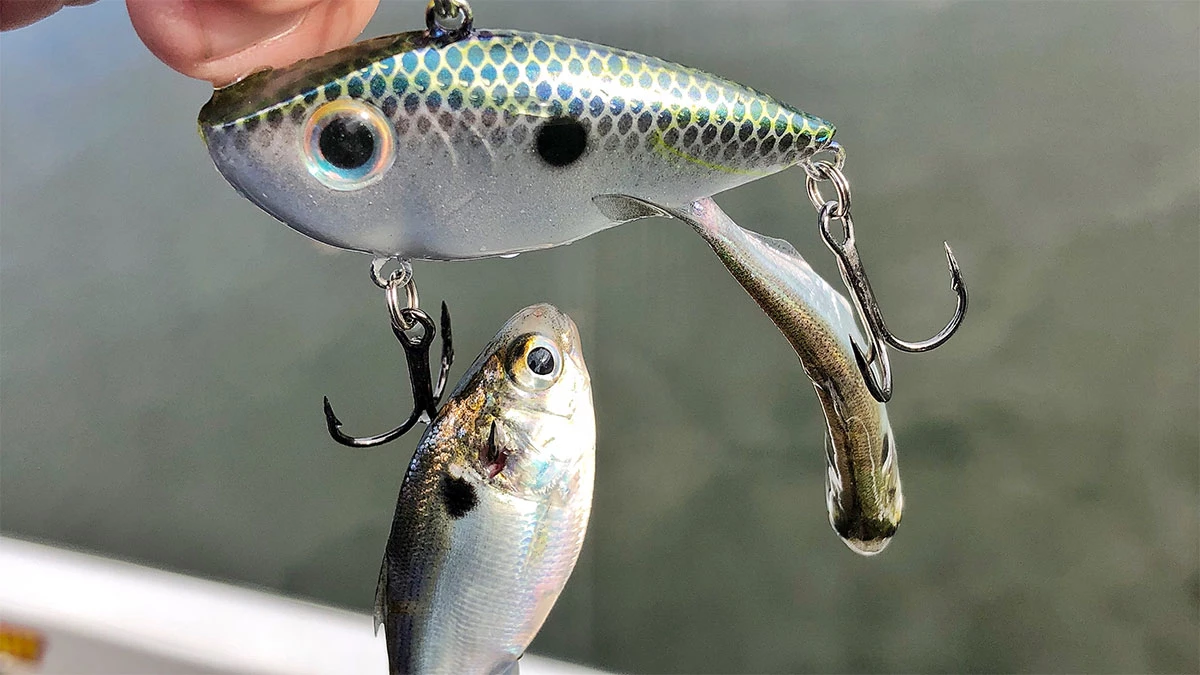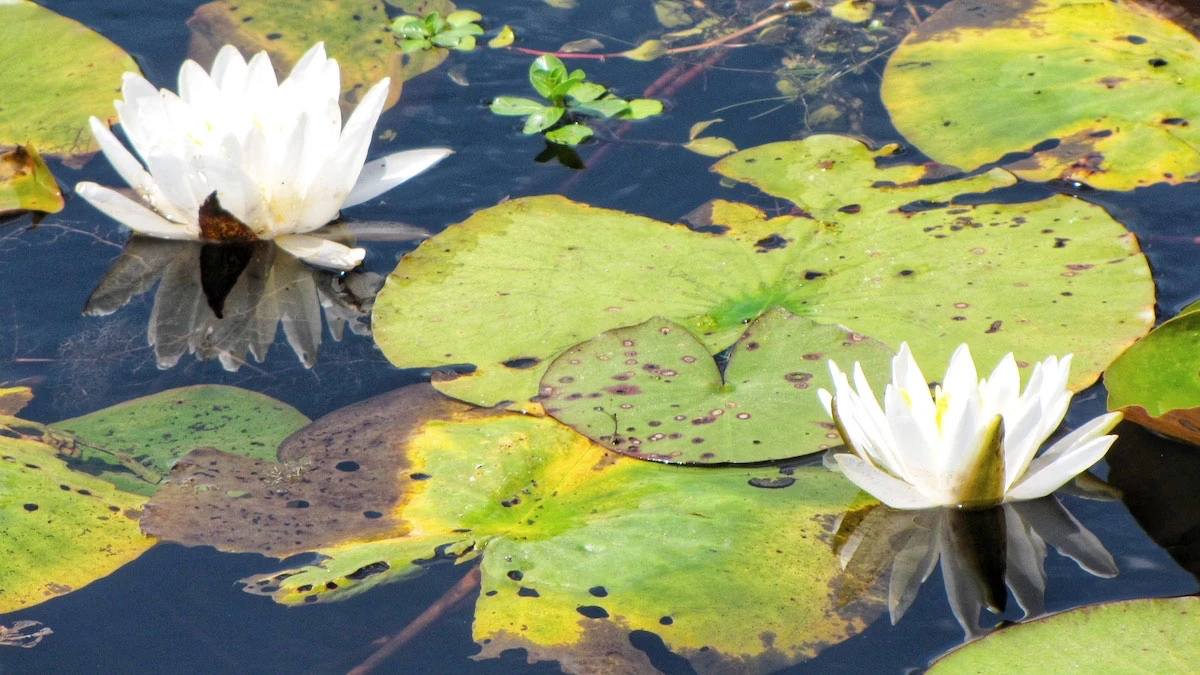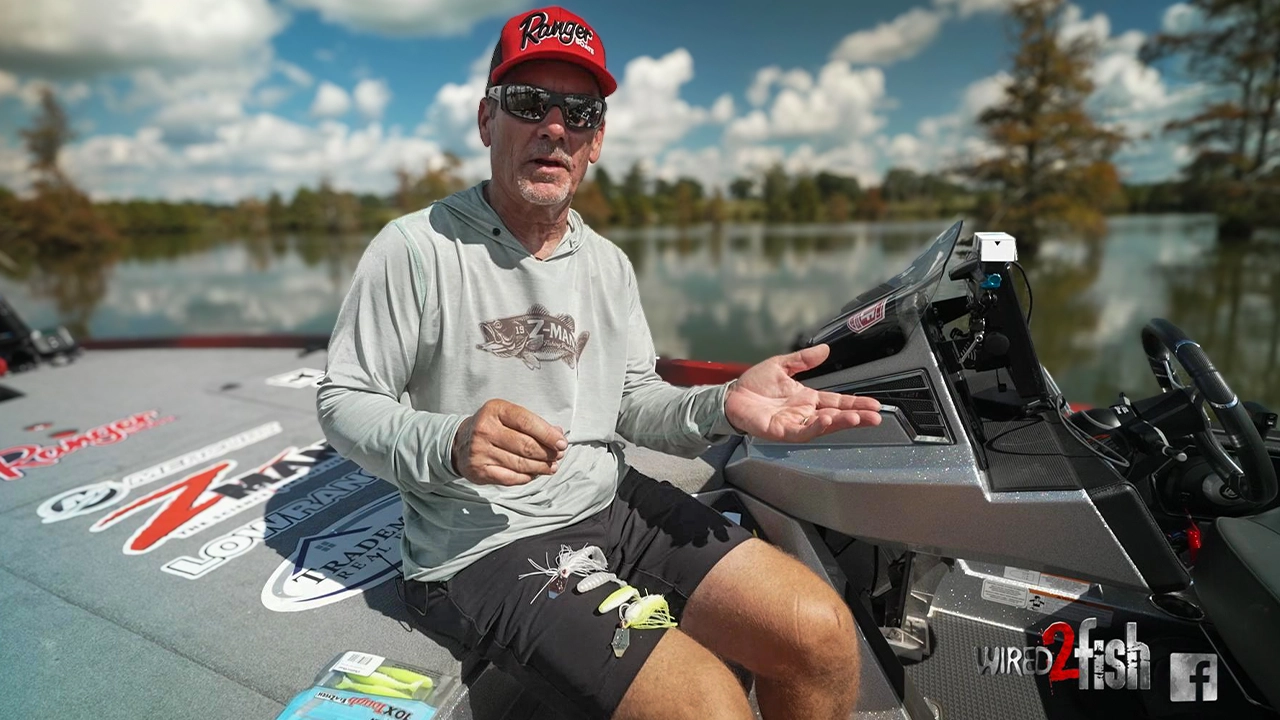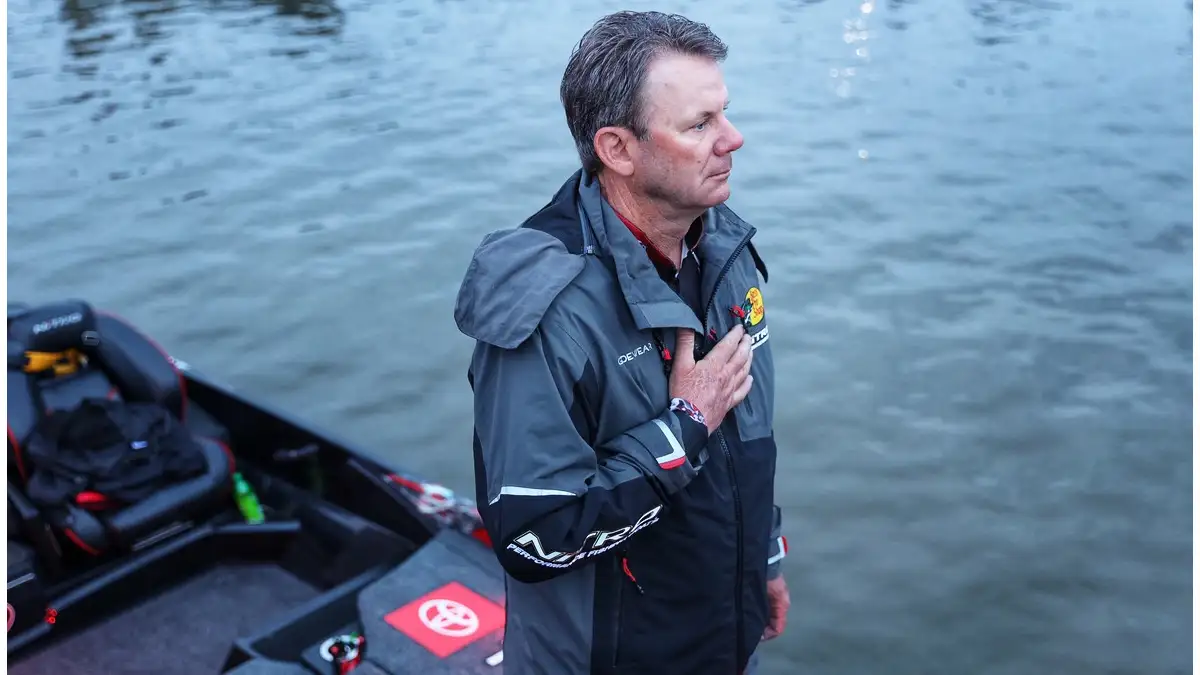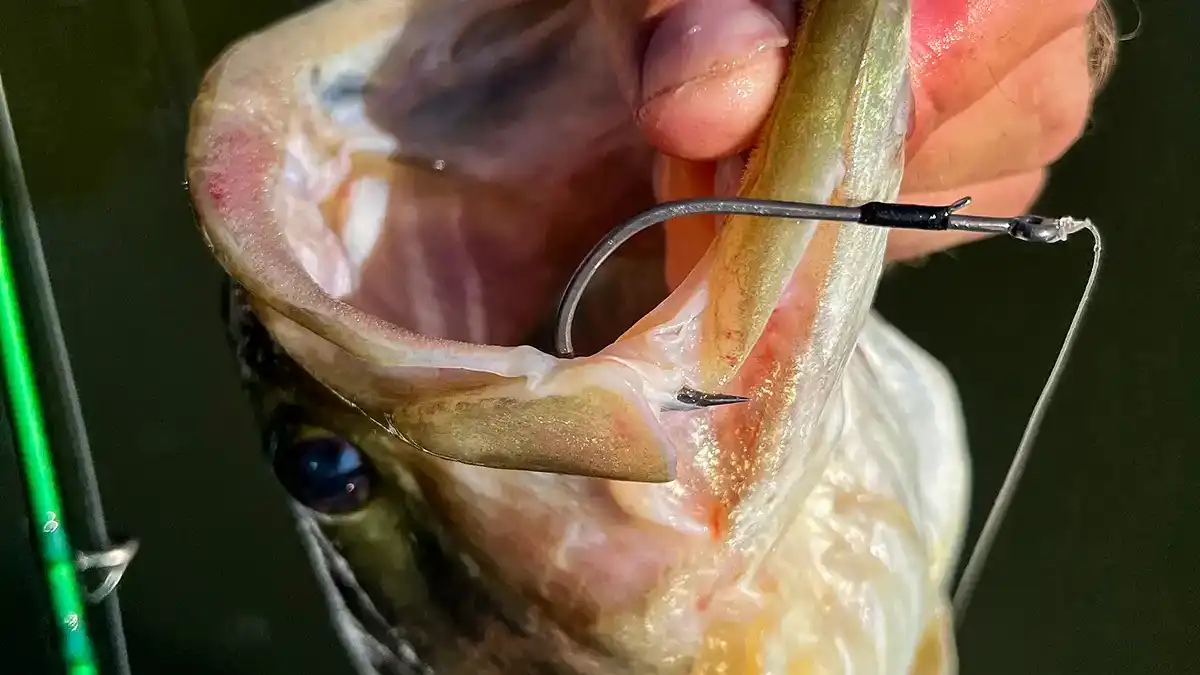Finding bass can be a little challenging at times but there are ways to increase your odds. For instance, instead of hunting down individual fish holding to isolated cover, suspended or otherwise in the middle of nowhere, you can intentionally target groups of bass throughout the year. Today, we’re going to discuss five situations that are known to cause fish to group up like this.
Bait
In the summer and late fall months in particular, following bait is a great way to locate bass. Baitfish like threadfin shad are often plentiful in the summer and fall in certain areas. Find these areas with bait and you’ll typically collide with the bass. In the late spring/early summer, this is most evidenced around shad spawns and spawning herring.
These are typically easy to locate with the naked eye, as bass will be busting the bait along the surface, early in the day in particular. In the summer, the bait balls move offshore and into deeper water. They become harder to detect by sight alone, and often require electronics to locate them.
In late summer and throughout the fall and late fall though, the bait moves back to the surface and eventually to the shallows, where they can again be easily spotted. Making sure you’re around a lot of bait is one sure-fire way to find a group of fish. Shad and herring are important but don’t ignore bluegill, crawfish and insect spawns, as all of these concentrations of food will create hotspots for schools of bass as well.
Seasons
Seasonal shifts in the weather will group fish up as well. These same sets of conditions are responsible for relocating much of the bait throughout the year, but understanding why the bait and bass move with the seasons is important as well. Bass are cold-blooded, so they rely on their environment to regulate their body temperatures.
For this reason, bass seek out water temps in the 60- to 80-degree range. This seems to be the range of temps where bass best thrive. At times, like in the winter, there’s no water in this range and the bass become increasingly lethargic and inactive. But throughout the rest of the year, large segments of the bass population will move up and down in the water column in search of these ideal temps.
So in the spring, the bass are primarily shallow. In the summer, they move deeper as the water temps rise. And then in the fall and late fall, they return shallow. While there are a few fish that can be caught throughout the water column any time of the year, focusing your attention on the right strike zone depending on the season will give you a much better chance to find groups of fish.
Fluctuating water levels
Bass will also group up on fisheries where the water level fluctuates. This can be on a tidal fishery like the California Delta on the West Coast or the Potomac River on the East Coast. It can also be on a lake with a winter draw down used to control flooding. And even on a fishery where flooding is prone to happen at certain times of the year.
Basically, any fishery where the water level is liable to go up and down, fish will school up. You’re going to see this alot throughout the fall and late fall months. Often when the water rises, the fish spread out. But when the water falls, that’s when they’ll group together. Bass can sense that the water around them is falling and the majority will pull out of an area and collect in the first bit of deeper water.
This may be a drop off, bluff wall, creek bend or point; wherever the water depth first starts to stabilize a bit. When the water drops 6 inches, it makes a big difference in a foot of water—not so much in 10 feet. So the bass that were scattered throughout the shallows pull out and stack up in the more stable water.
Current
Current also groups fish together. This is evident when fishing the banks of creeks and rivers, under dams and beneath rapids. If the current is strong, bass have a hard time maintaining ground and will burn a bunch of calories trying to do so. So they’ll seek out little current breaks and eddies where the water is a little slack and they can set up shop.
Boulders, jetties and points are some of the most common current breakers. There are two reasons the bass tuck in behind these obstructions: They can conserve energy and food gets delivered right to them. If it’s hard for a bass to hold its ground in the current, it’s exponentially harder for baitfish, crawfish and other forage to do the same.
As these little morsels are washed downstream and behind these current breaks, the reprieve from the swift current is quickly interrupted by a hungry bass. Learning to use current to target bass is a great way to locate groups of them.
Cover
Fishing around cover is another great way to find multitudes of bass. Brush, bridge pilings and submerged clumps of vegetation are just a few examples of cover that collect bass. Often, the baitfish are again playing a big part in why the bass are hanging around the cover.
Bait attempts to duck into vegetation and brush so as not to be such an easy target out in the open. The only problem, in an effort to allude a potential predator, they rush right into the open jaws of another that is using the cover as an ambush point.
Bass will operate in the same way individually around isolated smaller cover like stumps. But when you find a large piece of cover where the fish can do this in multiples, like a marina dock for example, that’s when you can find a group of bass to go after.
Though some fish do isolate, there will always be a few fish running together on any given fishery. Using bait, current, fluctuating water levels, cover and seasonal patterns to locate these groups is a great way to increase your productivity out on the water.



